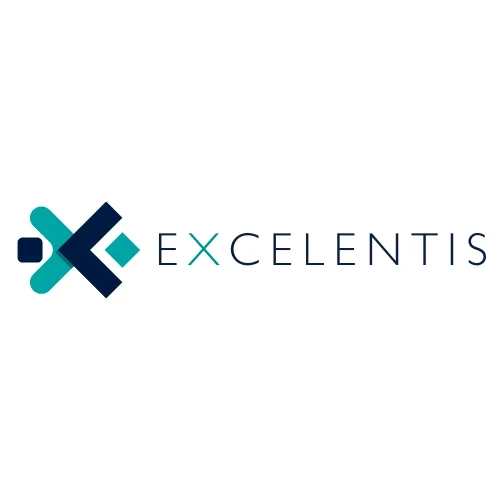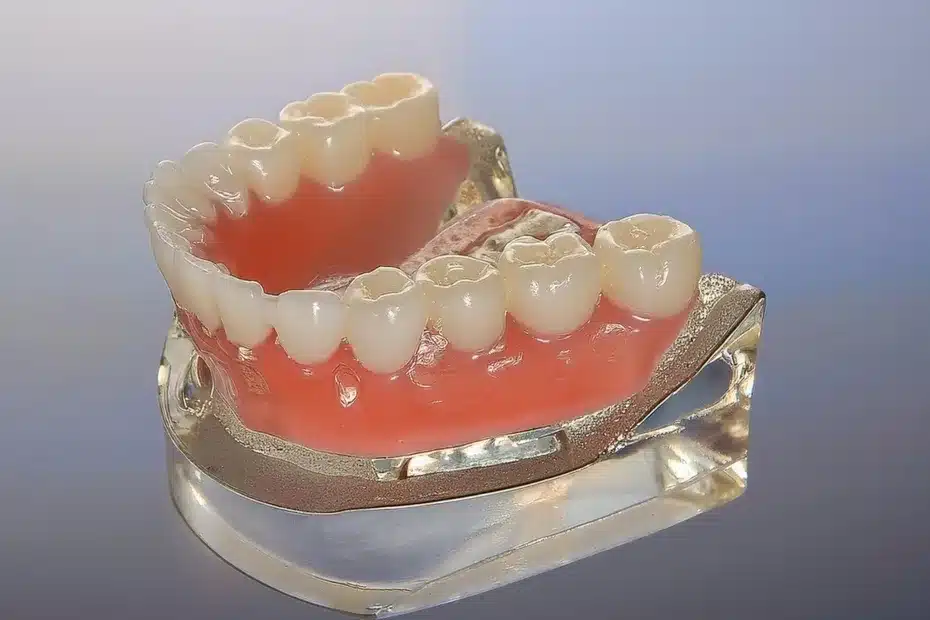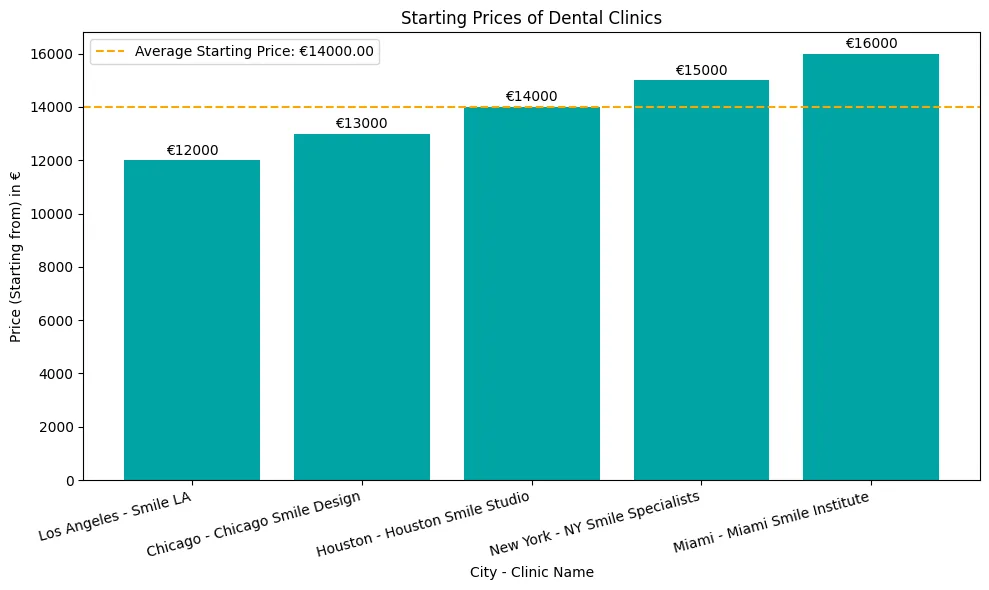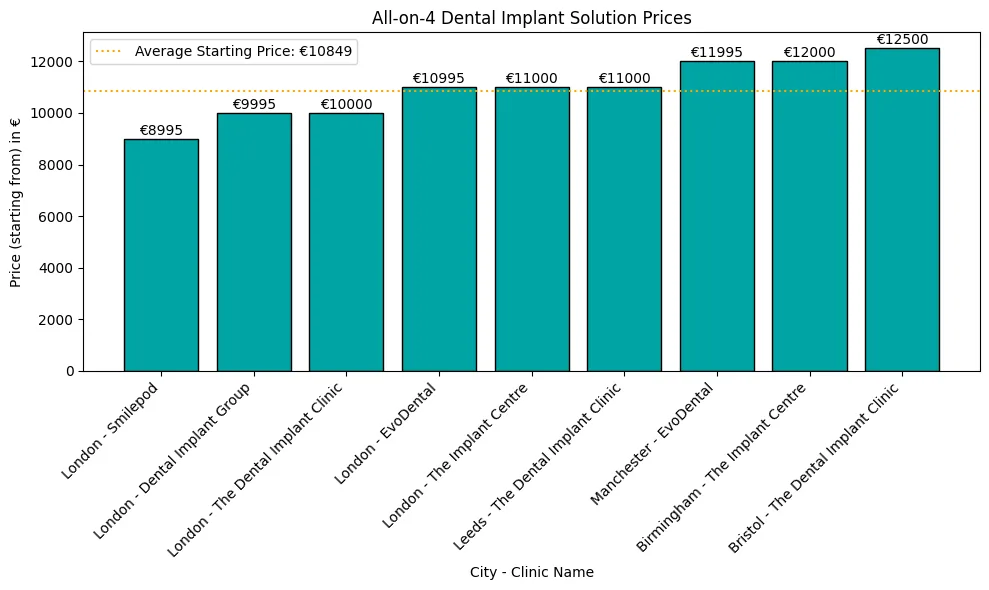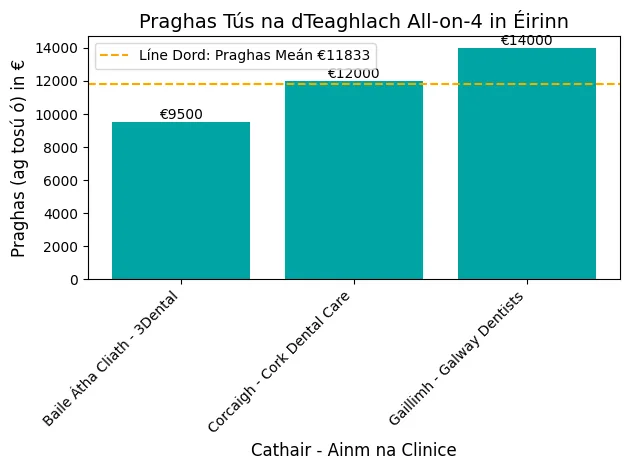Los implantes dentales All-on-4 angulados/inclinados son la respuesta para aquellas personas con una pérdida ósea severa y que desean una solución.
Descubra cómo esta nueva técnica aumenta la estabilidad de los implantes y reduce la necesidad de injertos óseos, una de las principales preocupaciones tanto de pacientes como de dentistas.
¿Qué son los implantes All-on-4 angulados / inclinados?
Los implantes All-on-4 angulados o inclinados ofrecen una solución fiable para restauraciones de arcada completa, especialmente en pacientes con pérdida ósea severa. Los estudios han demostrado una elevada tasa de éxito, con una tasa de supervivencia global de 100% en un estudio radiográfico retrospectivo de 3,5 años.
Beneficios clave:
Menor necesidad de injertos óseos
Mayores tasas de supervivencia de los implantes
Soporte protésico mejorado
Carga inmediata y funcionamiento
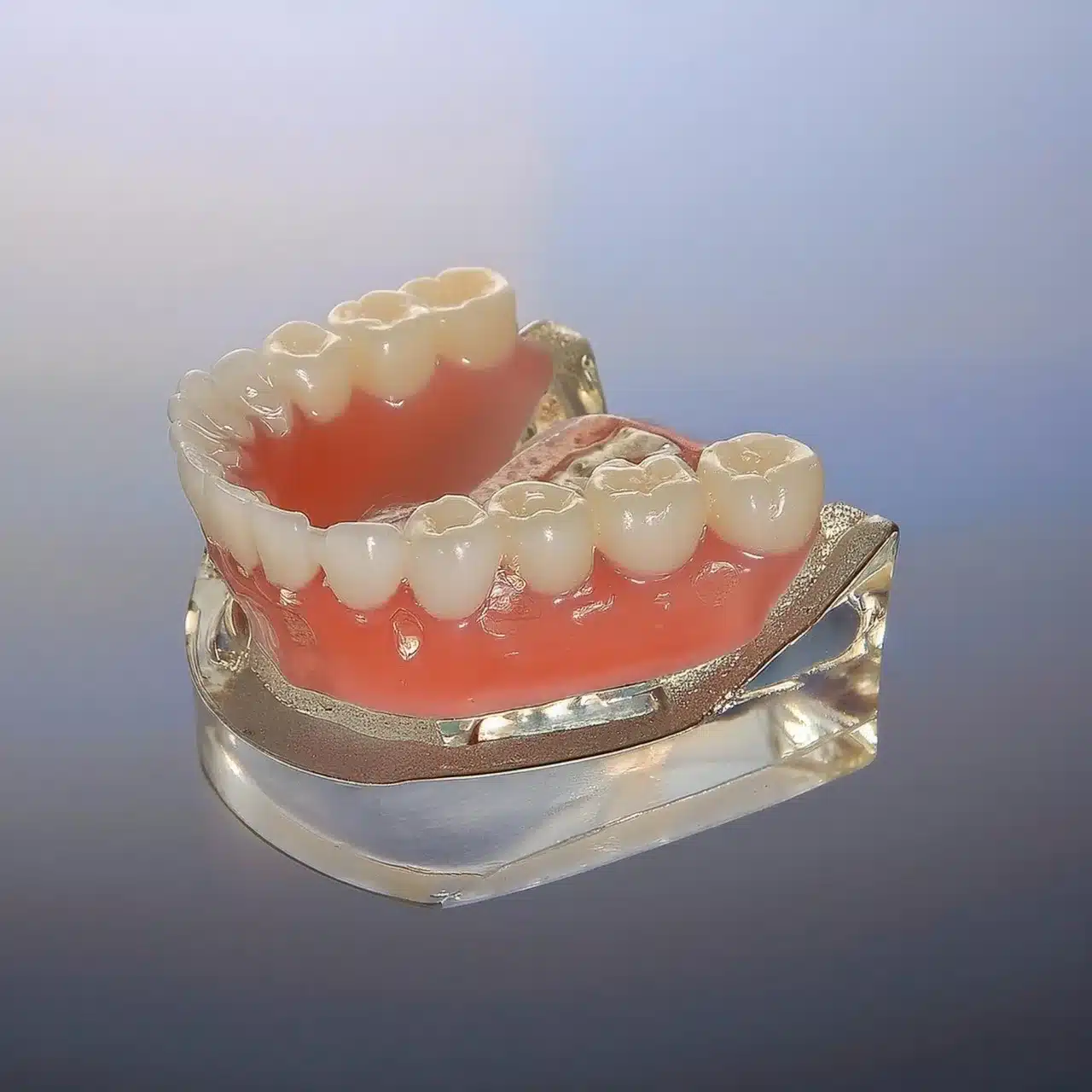
Ventajas de los implantes All-on-4 angulados/inclinados
Menos injertos óseos
Los implantes dentales All-on-4 angulados reducen la necesidad de injertos óseos.
Al inclinar los implantes posteriores, maximizamos el uso del hueso disponible y evitamos estructuras anatómicas como la cavidad sinusal y los canales nerviosos.
Esto simplifica el procedimiento, acorta el tiempo de recuperación y reduce los costes. En un estudio se observó que los pacientes tenían 40% menos de tiempo de tratamiento al no tener que hacer injertos óseos (1)
Mejores tasas de supervivencia de los implantes
Las tasas de supervivencia de los implantes dentales angulados All-on-4 son impresionantes, 97,3% a lo largo de 5 años (2).
La colocación de los implantes garantiza una distribución óptima de la carga, lo que contribuye a su longevidad.
Esta elevada tasa de éxito da a los pacientes la tranquilidad de la durabilidad y fiabilidad de su restauración dental.
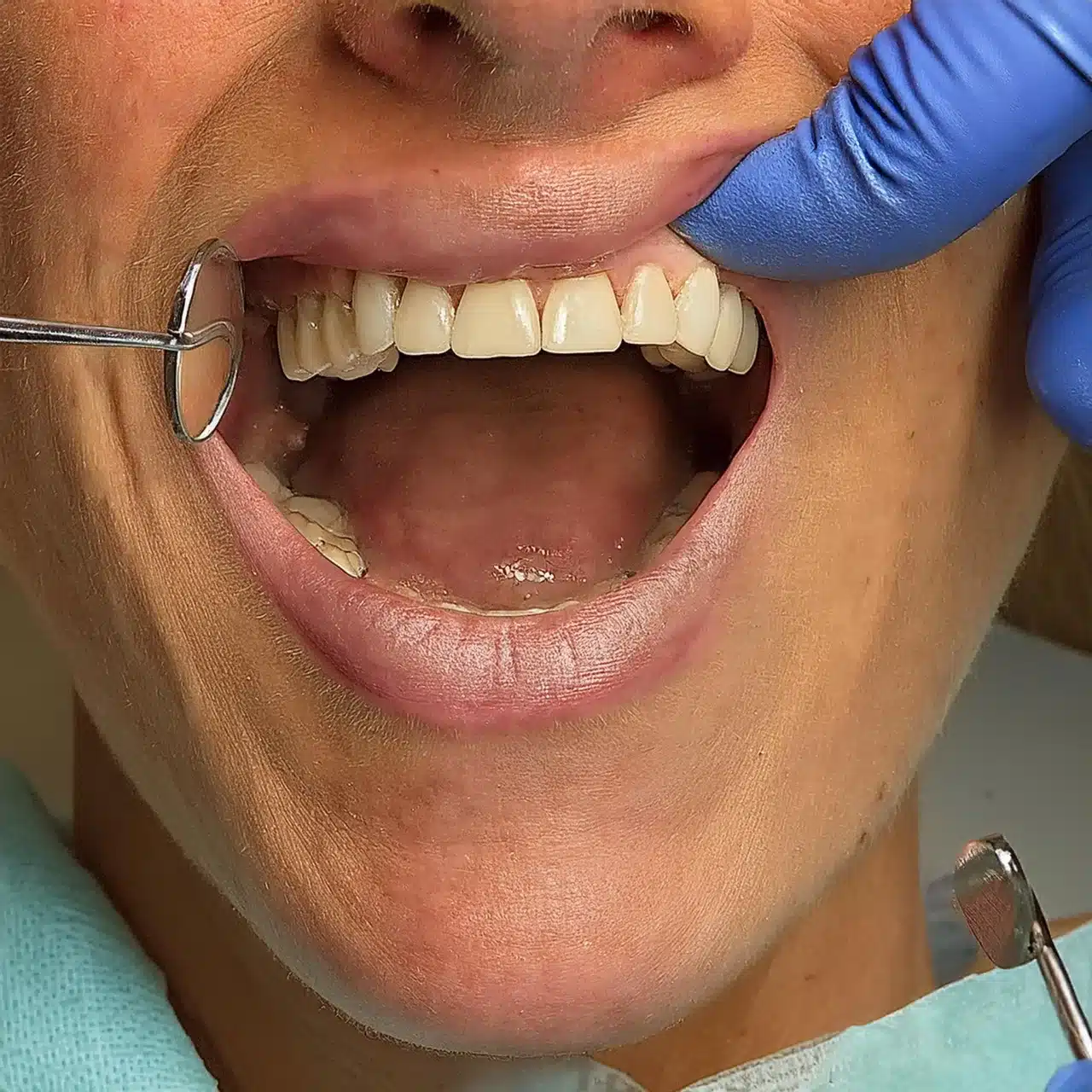
Mejor soporte protésico
Los implantes angulados proporcionan un mejor soporte protésico al ofrecer una base estable para las prótesis dentales.
Esta estabilidad es clave para la función inmediata, de modo que los pacientes pueden recuperar la funcionalidad poco después de la intervención.
El soporte también contribuye a mejorar los resultados estéticos y la satisfacción del paciente, como se ha visto en ensayos clínicos en los que el 95% de los pacientes quedaron satisfechos con el resultado protésico (3).
| Beneficio | Descripción | Pruebas estadísticas |
|---|---|---|
| Menor necesidad de injertos óseos | Maximiza el uso del hueso disponible, evita estructuras anatómicas | 40% reducción del tiempo de tratamiento |
| Mayores tasas de supervivencia de los implantes | La colocación estratégica garantiza una distribución óptima de la carga | 97,3% Tasa de supervivencia acumulada de los implantes en cinco años |
| Soporte protésico mejorado | Proporciona una base estable para las prótesis dentales | 95% satisfacción del paciente con los resultados protésicos |
Implantes All-on-4 tradicionales frente a angulados
Diferencias
¿Cuáles son las diferencias entre implantes tradicionales vs angulados all on 4?
Los implantes dentales tradicionales All-on-4 se colocan axialmente, es decir, en línea con la dirección natural del hueso maxilar.
Los implantes All-on-4 angulados se inclinan hasta 45° para maximizar el contacto con el hueso y evitar las estructuras anatómicas.
Esta inclinación permite implantes más largos en zonas de menor densidad ósea y mayor estabilidad.
Un estudio descubrió que los implantes angulados pueden reducir el efecto en voladizo en 30%, lo que supone una gran ventaja frente a los métodos tradicionales (1).
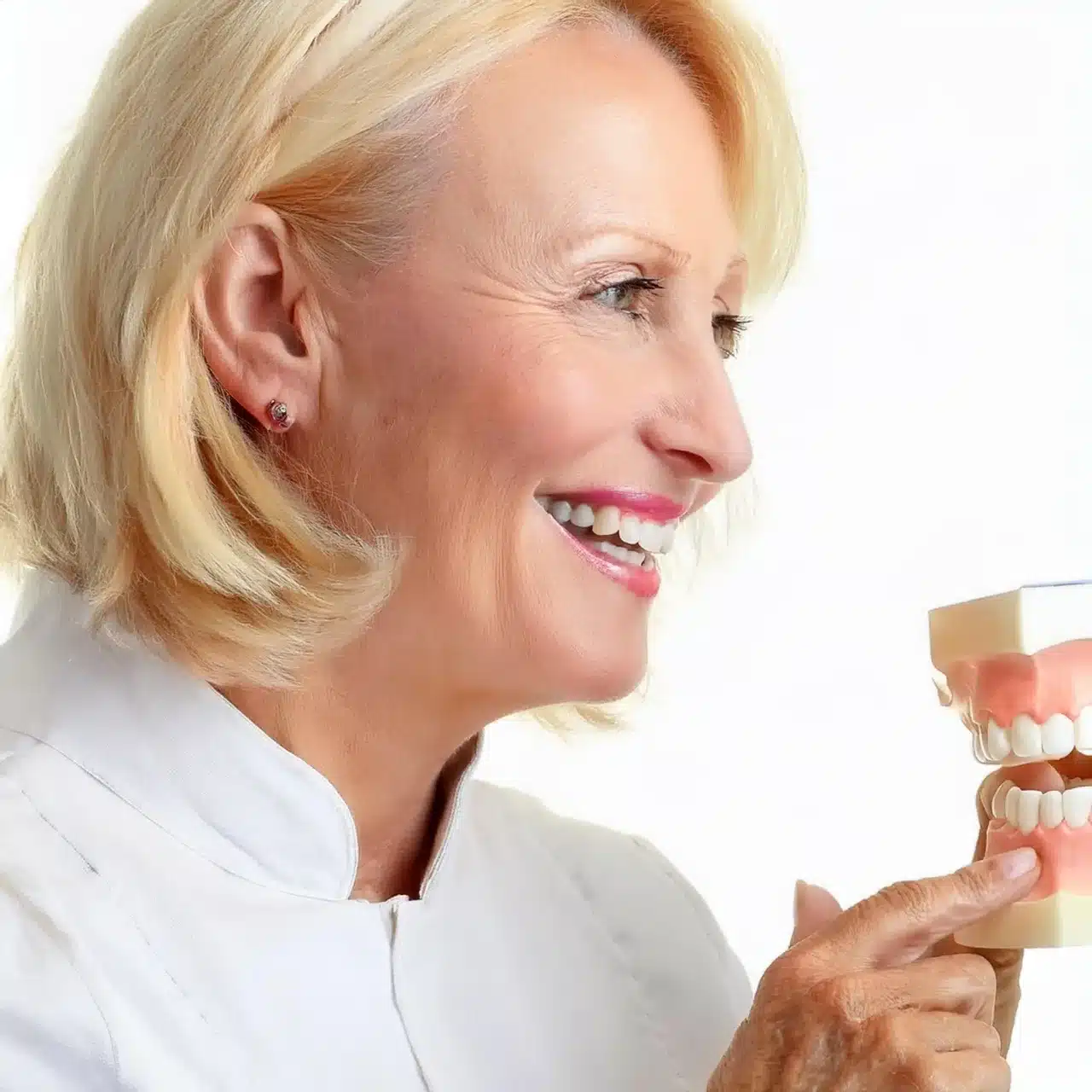
Resultados clínicos
Cuando comparamos los resultados clínicos, los implantes All-on-4 angulados obtienen mejores resultados en varias áreas.
Los pacientes con implantes angulados manifiestan una mayor satisfacción debido a una mayor comodidad y funcionalidad.
Un estudio reciente descubrió que los pacientes tenían 20% más eficacia masticatoria que aquellos con implantes tradicionales (2).
También se ha demostrado que los implantes angulados tienen una menor incidencia de periimplantitis, lo que contribuye al éxito a largo plazo y a la satisfacción del paciente.
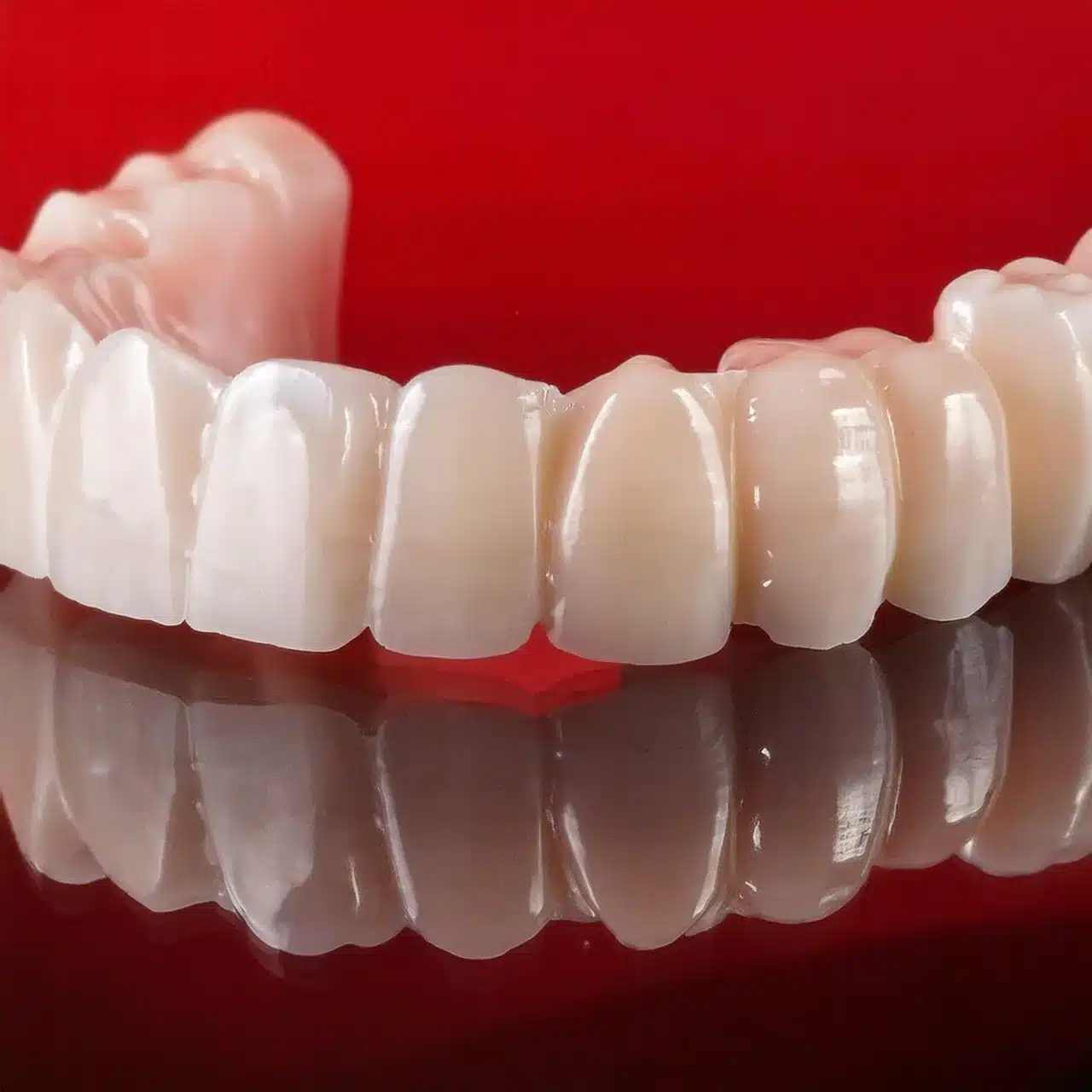
Implantes All-on-4 angulados / inclinados
Selección de pacientes
Seleccionar a los pacientes adecuados para los implantes angulados All-on-4 es la clave del éxito.
Los pacientes ideales tienen suficiente volumen óseo en el maxilar anterior y la mandíbula, ya que esta zona proporciona el soporte principal para los implantes.
Los pacientes con afecciones sistémicas como la diabetes no controlada o los sometidos a radioterapia pueden no ser adecuados.
Un estudio halló que los pacientes con 10 mm de altura ósea en la zona anterior tuvieron éxito 95% con implantes angulados (1).
Esto demuestra la importancia de las evaluaciones preoperatorias para garantizar una colocación y longevidad óptimas de los implantes.
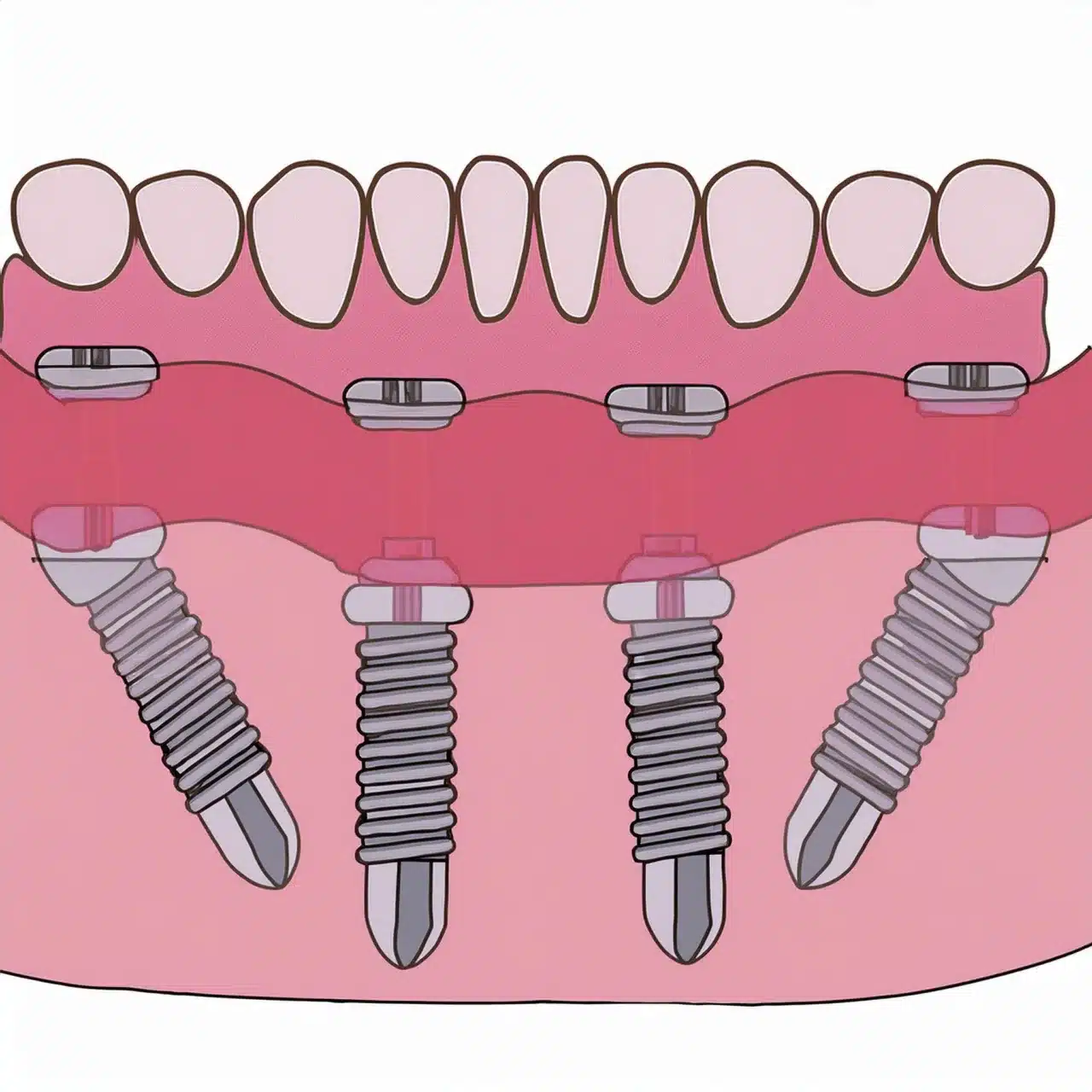
Técnicas quirúrgicas y complicaciones
La técnica quirúrgica para los implantes All-on-4 angulados requiere una planificación y ejecución precisas para evitar estructuras anatómicas y colocar los implantes en la posición correcta.
Los cirujanos suelen utilizar la cirugía guiada por ordenador para aumentar la precisión.
Sin embargo, la visibilidad y el acceso limitados en las zonas posteriores pueden complicar el procedimiento.
Un ensayo clínico descubrió que la planificación digital reducía el tiempo quirúrgico en 25% y mejoraba la colocación de los implantes (2).
A pesar de estos retos, la tecnología es cada vez mejor, por lo que los implantes All-on-4 angulados son una opción para muchos pacientes.

Análisis biomecánico de implantes All-on-4 angulados/inclinados
Esfuerzos y longitudes en voladizo
El análisis biomecánico de los implantes All-on-4 angulados muestra grandes ventajas en la distribución de tensiones y las longitudes de los voladizos.
Un estudio reveló que la distribución de la tensión alrededor de los implantes inclinados es mejor que la de los implantes colocados axialmente, especialmente en la zona posterior (2).
Esto es clave para reducir el riesgo de fracaso del implante y la estabilidad a largo plazo.
La longitud óptima del voladizo de los implantes angulados es menor que la de los implantes tradicionales, lo que reduce la tensión en la interfase implante-hueso (2).
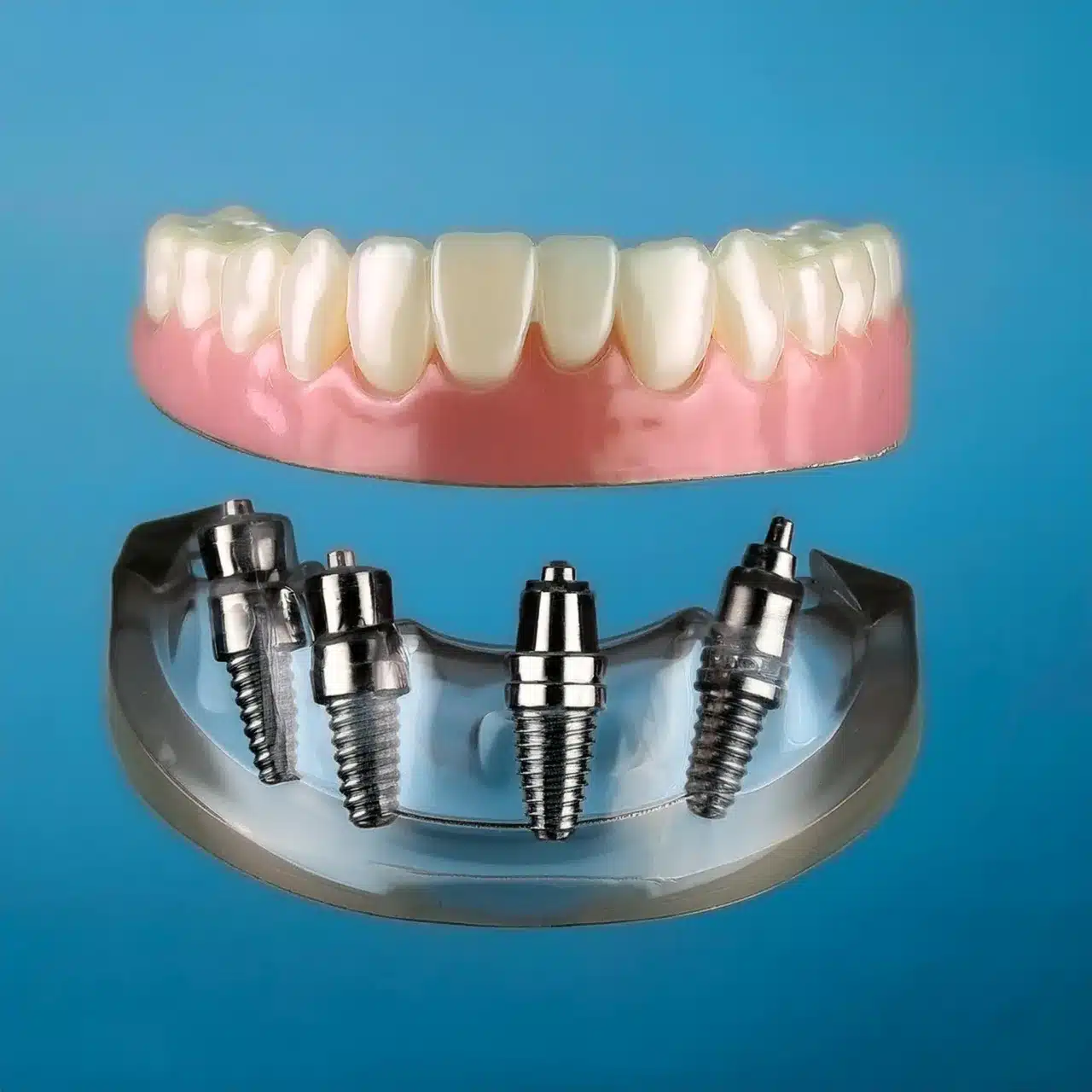
Tensión ósea marginal
El impacto de los implantes All-on-4 angulados sobre la tensión ósea marginal es otro aspecto importante del análisis biomecánico.
Las investigaciones demuestran que la tensión ósea marginal alrededor de los implantes inclinados es mucho menor que la de los implantes colocados axialmente, lo que significa una mejor conservación del hueso y un menor riesgo de periimplantitis (4).
En una serie retrospectiva de casos clínicos y radiográficos de 7 y 5 años se observó que el nivel óseo marginal alrededor de los implantes inclinados permanecía estable con el paso del tiempo, con una pérdida ósea de 0,5 mm (4).
Esto demuestra la importancia de una colocación y angulación precisas de los implantes para minimizar el estrés óseo marginal y el éxito a largo plazo.
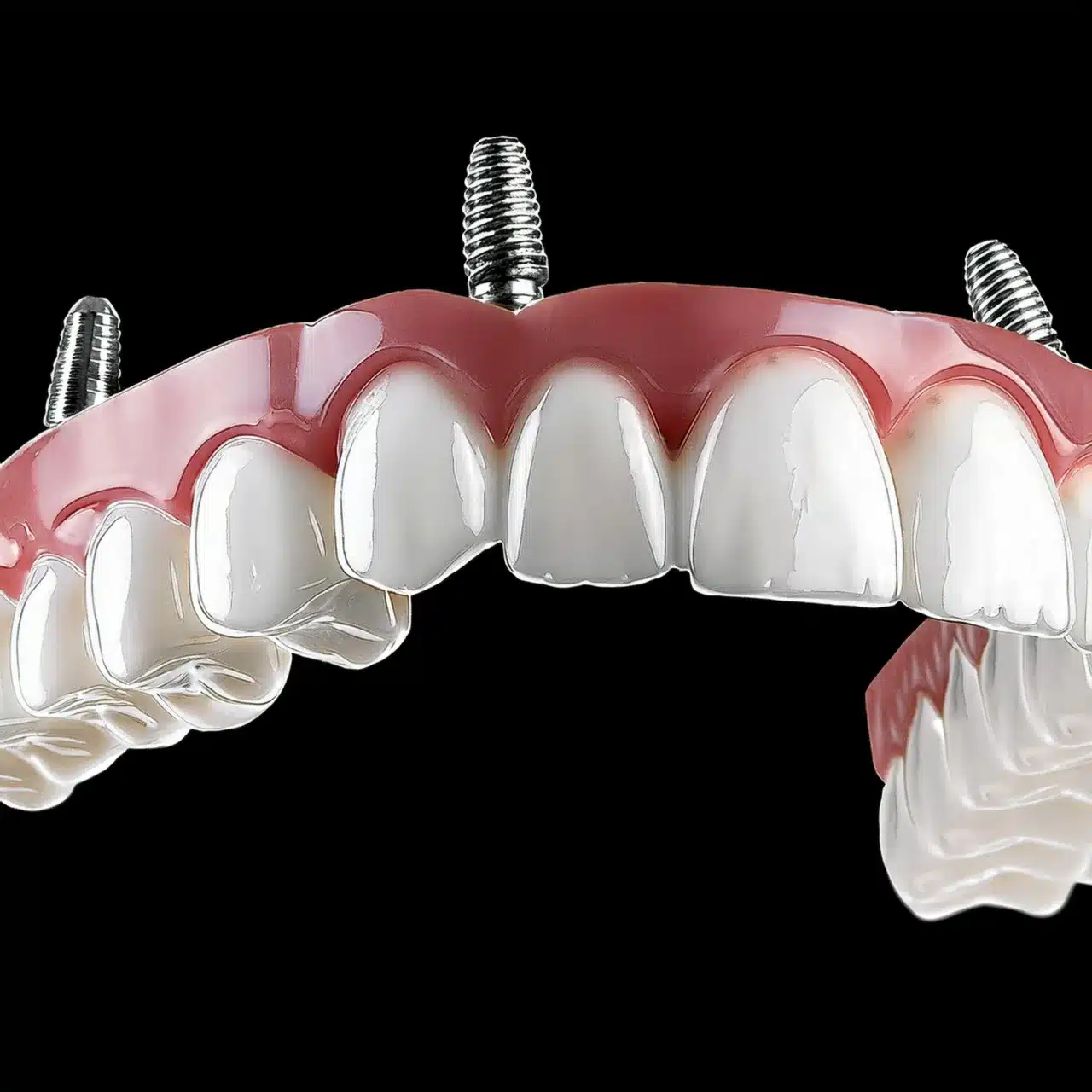
Conclusiones
Principales conclusiones:
Implantes angulados All-on-4 son una solución probada para restauraciones de arcada completa en pacientes con pérdida ósea severa.
Reduce injerto óseo y aumenta la supervivencia de los implantes.
Carga inmediata y función es posible con los implantes angulados, lo que se traduce en una mayor satisfacción del paciente y una mejor calidad de vida.
Conclusión:
En resumen, los implantes All-on-4 angulados suponen un cambio radical para los pacientes con pérdida ósea severa, ya que mejoran la estabilidad del implante y reducen la necesidad de injertos óseos.
Al comprender las ventajas, las consideraciones clínicas y el análisis biomecánico de esta técnica, los profesionales de la odontología pueden ofrecer restauraciones mejores y más duraderas.
Esta guía pretende ofrecer una visión global de los implantes angulados All-on-4 para que pacientes y profesionales puedan tomar decisiones informadas sobre este tratamiento.
PREGUNTAS FRECUENTES
Referencias
Chrcanovic BR, Albrektsson T, Wennerberg A. Implantes dentales inclinados frente a colocados axialmente: A meta-analysis. Clin Oral Implants Res. 2014;25(10):e139-e147. doi: 10.1111/clr.12315
Artículo: Implantes dentales inclinados frente a implantes colocados axialmente: Un meta-análisisWang Q, Zhang ZZ, Bai SZ, et al. Biomechanical analysis of stress around the tilted implants with different cantilever lengths in all-on-4 concept. BMC Oral Health. 2022;22(1):469. doi: 10.1186/s12903-022-02520-8
Artículo: Análisis biomecánico de la tensión alrededor de los implantes inclinados con diferentes longitudes de voladizo en el concepto all-on-4Soyfer V. Review Article on the All-On-Four Treatment Concept in Dental Implants. Arch Surg Clin Res. 2023;7:019-023. doi: 10.29328/journal.ascr.1001070
Artículo: Artículo de revisión sobre el concepto de tratamiento All-On-Four en implantes dentalesMaló P, de Araújo Nobre M, Lopes A, Ferro A, Gravito I. Concepto de tratamiento All-on-4 para la rehabilitación de la mandíbula completamente desdentada: A 7-Year Clinical and 5-Year Radiographic Retrospective Case Series with Risk Assessment for Implant Failure and Marginal Bone Level. Clin Implant Dent Relat Res. 2015;17 Suppl 2:e531-e541. doi: 10.1111/cid.12282
Artículo: Concepto de tratamiento All-on-4 para la rehabilitación de la mandíbula completamente desdentada: Una serie de casos retrospectiva clínica y radiográfica de 7 y 5 años con evaluación del riesgo de fracaso del implante y del nivel óseo marginalLopes A, Maló P, de Araújo Nobre M, Sanchez-Fernández E. The NobelGuide All-on-4 Treatment Concept for Rehabilitation of Edentulous Jaws: A Prospective Report on Medium- and Long-Term Outcomes. Clin Implant Dent Relat Res. 2015;17 Suppl 2:e406-e416. doi: 10.1111/cid.12260
Artículo: El concepto de tratamiento NobelGuide All-on-4 para la rehabilitación de maxilares edéntulos: un informe prospectivo sobre los resultados a medio y largo plazo.
